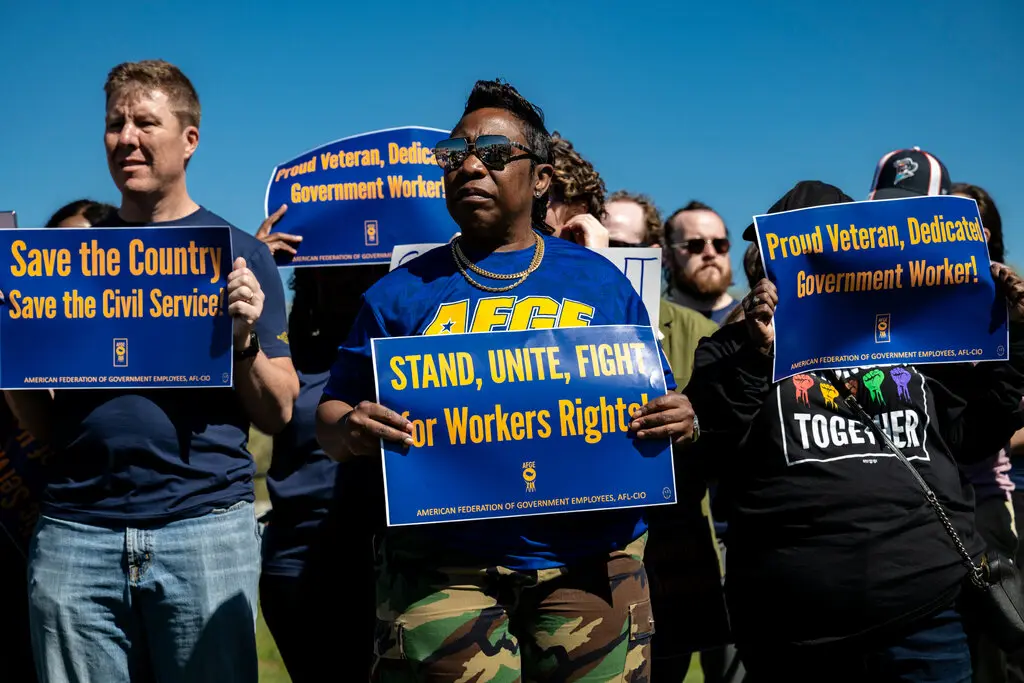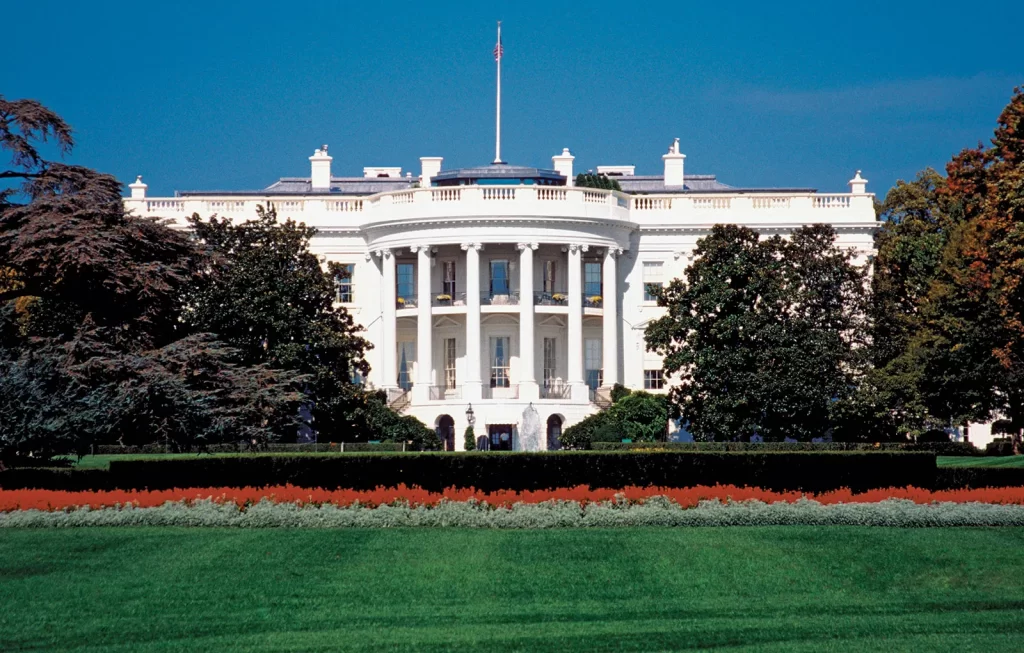The US government began shut down on Wednesday morning at 12:01 am, amid a bitter spending deadlock between President Trump and Democrats in Congress that will disrupt federal services and leave many workers furloughed.
Shortly after midnight, Democratic and Republican leaders raced to cast blame on social media.
Senator Chuck Schumer, Democrat of New York and the minority leader, wrote that “the Republican shutdown has just begun because they wouldn’t protect Americans’ health care,” adding that “We’re going to keep fighting for the American people.”
House Speaker Mike Johnson of Louisiana wrote that “Democrats have officially voted to CLOSE the government,” saying that the question now would be: “How long will Chuck Schumer let this pain go on — for his own selfish reasons?”
President Trump posted another AI-generated video on social media mocking Representative Hakeem Jeffries of New York, the Democratic House leader, again with a cartoon mustache and sombrero, this time with four images of Mr. Trump as a mariachi band. The original video was from a TV interview tonight, in which Mr. Jeffries denounced the video Trump posted yesterday as “bigotry.” Republicans have been making false claims that Democrats are forcing a government shutdown because they want to give free healthcare to immigrants in the country illegally.
The Senate adjourned for the evening and does not plan to return until Wednesday, assuring a government shutdown.Senator John Thune, Republican of South Dakota and the majority leader, sounded optimistic that more Democrat senators might break from their party to back the G.O.P. spending plan. He told reporters that Republicans were having “some conversations” with “Democrats who are very unhappy with the situation that they’re in.”
Asked if he was concerned about this, Senator Chuck Schumer, the Democratic leader, said that Democrats were willing to have negotiations as long as they were “bipartisan, and they’ve got to have real input from both sides.”
Shortly after the Senate failed to pass a measure to fund the federal government, the White House’s Office of Management and Budget issued a memo directing executive branch agencies to “execute their plans for an orderly shutdown.”Senator John Barasso of Wyoming, the No. 2 Republican, said the chamber would vote again on Wednesday on the temporary funding measure.
With a 55-45 vote, Senate Democrats again blocked Republicans’ bill to keep the federal government open and avert a shutdown expected to begin at midnight.
Senators John Fetterman of Pennsylvania and Catherine Cortez Masto of Nevada were the only Democrats to break with their party and vote in favor. Senator Angus King, an independent from Maine who caucuses with Democrats, also supported the bill, which would have kept the government funded until Nov. 21. Senator Rand Paul of Kentucky was the lone Republican to oppose the measure.
Senator Catherine Cortez Masto, Democrat of Nevada, said in a statement that she planned to break with her party and vote for the Republicans’ stopgap spending bill to avert a shutdown. The Senate is currently voting on the G.O.P. proposal, but it is not expected to muster enough Democratic support to pass.
“We need a bipartisan solution to address this impending health care crisis, but we should not be swapping the pain of one group of Americans for another,” Cortez Masto said. “I remain focused on protecting health care for working families, and I call on my colleagues on both sides of the aisle to work together to tackle this problem.”
With a party line vote of 53-47, Senate Republicans just defeated a proposal led by Democrats to fund the government that included extending Obamacare subsidies set to expire at the end of the year and undoing other health care cuts made in the Republicans’ One Big Beautiful Bill earlier this summer. The vote on the Republicans’ bill comes next.

The Senate is now voting on two bills aimed at averting a shutdown. The first, proposed by Democrats, is expected to fail. The second was pushed through the House by Republicans but rejected by the Senate earlier this month. Only one Democrat supported it during that vote. While more Democrats might support it this time, the measure is not expected to reach the 60 votes needed for passage.
The National Park Service plans to keep national parks largely open to the public during the expected government shutdown, according to an internal email reviewed by The New York Times. Many conservationists have argued that the parks should be closed to prevent irreparable damage.
“Park roads, lookouts, trails and open-air memorials will generally remain accessible to visitors,” Jessica Bowron, the park service’s acting director, wrote in the email on Tuesday to park officials.
Parks that have a bank of funds from entrance fees should use it to “provide basic visitor services,” Bowron wrote, including maintaining restrooms and roads, collecting trash, operating campgrounds, policing and staffing entrances.
During the government shutdown of December 2018 to January 2019, the Trump administration furloughed most workers but kept the parks open, resulting in overflowing toilets, piles of trash and damage to fragile ecosystems. The administration also tapped entrance fees, which the Government Accountability Office later found was an illegal use of funds.
Trump threatens mass layoffs
President Trump signaled on Tuesday that he could try to maximize the pain of a government shutdown, threatening to leverage the imminent closure to fire “a lot” of civil servants and slash a range of federal programs and benefits that he disfavors.
The latest round of ultimatums, which came hours before government funding expired, underscored the extent of the political dysfunction in Washington. It quickly prompted a set of unions representing federal employees to file a lawsuit seeking to block the administration from conducting mass layoffs during the shutdown.
Trump’s response to a question about why he would link more federal job cuts to a shutdown was also revealing about his political motives. After asserting that the shutdown would force the government to make layoffs — though the government has traditionally chosen to furlough workers during shutdowns — he pointed out who would be most affected: “They’re going to be Democrats.”
President Trump suggested during his Oval Office remarks this afternoon that he believed a government shutdown would be advantageous for him because it would punish Democrats by undermining their policies. “We’re doing well as a country, so the last thing we want to do is shut it down, but a lot of good can come down from shutdowns,” Trump said. “We can get rid of a lot of things that we didn’t want, and they’d be Democrat things.”
He said twice that Democrats “just don’t learn,” indicating that at least part of his plan in the shutdown was to teach them a lesson.
President Trump again hinted that he planned to use the shutdown to lay off federal workers rather than furloughing them. Speaking to reporters in the Oval Office, he said, “When you shut it down you have to do layoffs, we’d be laying off a lot of people.” Last week, the White House Office of Management and Budget told federal agencies to prepare for a possible round of mass firings if Congress failed to strike a deal to avert a shutdown. In previous shutdowns, most federal workers were typically furloughed, and many received back pay once a funding agreement was reached.
When asked about recent polling from The New York Times showing that only 2 percent of voters rank health care as the “most important problem facing the country today,” Senator Chuck Schumer, the minority leader, who has led the Democrats’ strategy of insisting that health care costs be addressed, said that he had not seen the polling numbers.

But, he added, “a lot of people” didn’t know that they would start getting notices on Wednesday that their health care plan would soon face cost increases because of the subsidies that reduced premium costs for millions of American’s were set to expire.
“Once they start getting these notices, and they are these huge staggering increases, they’re gonna be staggered,” Schumer told reporters. “They’re gonna say, ‘What’s happening?’ And we’re going to be right there explaining to them it’s because the Republicans wouldn’t negotiate with us.”
Senate Republican leaders have scheduled votes starting at 5:30 p.m. on both the House-passed G.O.P. stopgap bill to avert a shutdown and Democrats’ counteroffer. Democrats have signaled that they again plan to block the Republican-written funding extension because it does not carry the concessions on health care they are demanding in exchange for their votes.
Senate Republican leaders have indicated that they intend to continue forcing Democrats to vote over and over on the stopgap funding bill Republicans pushed through the House, essentially making them vote to block the G.O.P.’s short-term fix again and again. “We’re going to continue to vote on the clean C.R.,” Senator John Barrasso of Wyoming, the Republican whip, said, using an abbreviation for a continuing resolution.
The White House last week informed a federal office charged with conducting oversight of the Trump administration that it was blocking congressionally approved money for its operations for the coming fiscal year, effectively shuttering it after midnight on Tuesday.
The blocked funds are not linked to the funding showdown between congressional Democrats and Republicans that could prompt a government shutdown at the same time.
“They’re lying,” Senator Chuck Schumer said in response to Republicans’ misleading claim that Democrats were shutting down the government to fund free health care for unauthorized immigrants. A range of top Republican leaders, including Vice President JD Vance and Speaker Mike Johnson, have made that assertion central to their criticism of Democrats’ demands.
Senator Jon Ossoff, Democrat of Georgia, who faces a tough re-election bid next year, told reporters that it was his aim to do whatever he could to “keep the government open and protect people’s health care.” He did not indicate how he planned to vote later in the day on the Republican bill to avert a government shutdown. Earlier this month, he voted against the same bill, along with most in his party.
Speaker Mike Johnson’s staff has placed a television outside his office that is looping a minute-long video featuring Democrats criticizing government shutdowns.
Because Johnson’s office is near the Rotunda, at the center of the Capitol, small groups of tourists generally walk by it all day. Most of them are ignoring the video as they proceed on their guided tours, though some have stopped to take photos. (Such tours will stop if the government is not funded.)
-Agency Report